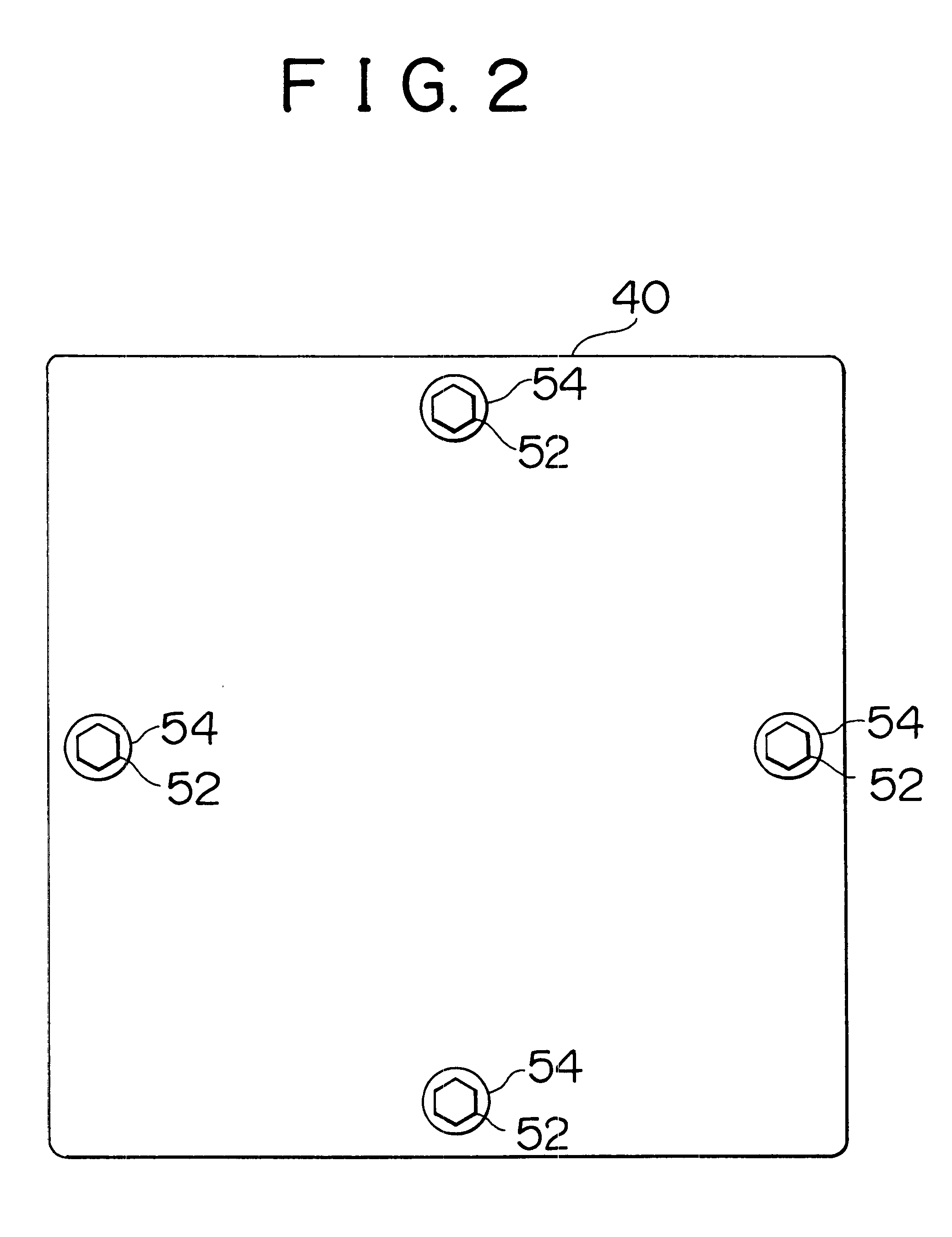Hydrogen storage device and hydrogen storage system
a technology of hydrogen storage and hydrogen storage, which is applied in the direction of indirect heat exchangers, lighting and heating apparatus, furnaces, etc., can solve the problems of hydrogen occlusion alloy fatigue, long time-consuming heating of hydrogen occlusion alloy, and inability to achieve high energy efficiency
- Summary
- Abstract
- Description
- Claims
- Application Information
AI Technical Summary
Benefits of technology
Problems solved by technology
Method used
Image
Examples
first embodiment
FIG. 1 is an exterior front view of a hydrogen storage device in accordance with the invention. FIG. 2 is a side view of the hydrogen storage device shown in FIG. 1. FIG. 3 is a longitudinal internal structural view of lids 40, 41 and a body 21 of the hydrogen storage device 20 shown in FIG. 1 when they are cut longitudinally.
The hydrogen storage device 20 is provided with the body 2, porous molded pieces 30 (see FIG. 3), and the lids 40, 41. The body 21 is made of a metal and has a cross-section of a rectangular tube. The porous molded pieces 30 are made of a hydrogen occlusion alloy and are disposed inside the body 21. The lids 40, 41 are made of a rectangular metal material and serve to close opposed end portions of the body 21. Flange portions 22, 23 are formed at the opposed end portions of the body 21, and a hydrogen inlet / outlet 24 is formed in an upper central portion of the body 21. Insulation gaskets 50, 51 (e.g., a non-porous ceramic material) are disposed between the lid...
second embodiment
Next, the invention will be described.
The second embodiment has the feature that a plurality of hydrogen storage devices 20 as described in the first embodiment are connected, and a connecting pattern of the hydrogen storage devices 20 is switched by a resistance control mechanism 82, whereby the internal resistance of hydrogen occlusion alloy in the hydrogen storage devices 20 is made to coincide with the internal resistance of the power source 80. In general, in order to heat hydrogen occlusion alloy (the molded pieces 30) in the hydrogen storage devices 20 within the shortest possible period of time, a maximum electric power needs to be supplied to the hydrogen occlusion alloy from the power source 80. A heat generation output P of hydrogen occlusion alloy in the equivalent circuit of the first embodiment shown in FIG. 8 is defined by the following equation (1).
P=IV=I.sup.2 R=V.sup.2 R / (r+R).sup.2 (1)
V is an electric voltage supplied by the power source 80,
I is an electric curren...
third embodiment
In the hydrogen storage device 100 in accordance with the third embodiment, a change in dimension of the molded piece 110 in the direction of the long axis resulting from its volume expansion at the time of occlusion of hydrogen is absorbed by the movable urging electrodes 60, 61, and a change in dimension of the molded piece 110 in the lateral direction is absorbed by the first and second conductive cushioning materials 120a, 120b. This prevents the molded piece 110 from directly contacting the adiabatic insulation material 25, cushions any impact on the molded piece 110, and prevents the molded piece 110 from being damaged. On the contrary, a change in dimension of the molded piece 110 in the direction of the long axis resulting from its volume reduction at the time of discharge of hydrogen is complemented by the movable urging electrodes 60, 61 urging and elongating the molded piece 110.
Thus, it is possible to maintain physical contact between opposed ends of the molded piece 110...
PUM
| Property | Measurement | Unit |
|---|---|---|
| thickness | aaaaa | aaaaa |
| thickness | aaaaa | aaaaa |
| thickness | aaaaa | aaaaa |
Abstract
Description
Claims
Application Information
 Login to View More
Login to View More - R&D
- Intellectual Property
- Life Sciences
- Materials
- Tech Scout
- Unparalleled Data Quality
- Higher Quality Content
- 60% Fewer Hallucinations
Browse by: Latest US Patents, China's latest patents, Technical Efficacy Thesaurus, Application Domain, Technology Topic, Popular Technical Reports.
© 2025 PatSnap. All rights reserved.Legal|Privacy policy|Modern Slavery Act Transparency Statement|Sitemap|About US| Contact US: help@patsnap.com



